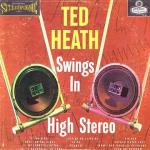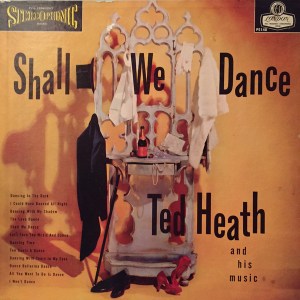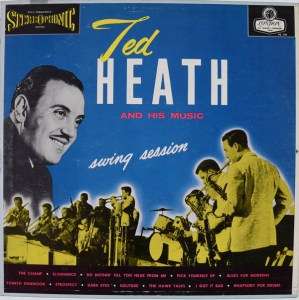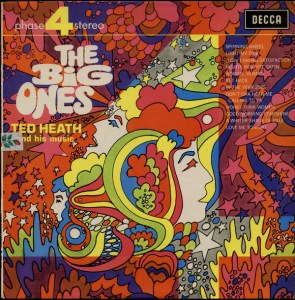
More of the Music of Ted Heath
More Records that Are Good for Testing Tonality and Timbre
The best of the best vintage recordings are truly amazing if you can play them right.
That’s a big if. In fact, it may just be the biggest if in all of audio.
But that is not our story for today. Our story today concerns the relationship between more accurate timbre and higher fidelity.
What do we love about vintage pressings like the Ted Heath disc you see pictured above?
The timbre of the instruments is reproduced with wonderful fidelity.
The unique sound of every instrument in this very large ensemble has been recorded accurately. Every instrument sounds the way it would sound if you were hearing it live. Every instrument sounds real.
That’s what we mean by hi-fi, not the kind of “Audiophile Sound” that passes for hi-fidelity on some records. (Some of the worst offenders along those lines can be found here.)
Old Sound, New Sound
Older audiophile records, typically those made by Mobile Fidelity in the ’70s and ’80s, suffered from a common group of problems which could be heard on practically every record they released:
A boosted top, a bloated bottom, and a sucked-out midrange.
Nowadays that kind of low fidelity sound is no longer in vogue.
Not to worry!
A new, equally low fidelity sound has taken its place.
What seems to be the “in sound” these days, judging by the Heavy Vinyl Reissue pressings we’ve played in recent years, is a very different sound from the one described above, with a different but no less irritating suite of shortcomings.
These new records, with few exceptions, tend to be compressed, thick, dull, opaque, veiled, recessed and badly lacking in ambience.
These are the current hallmarks of the Heavy Vinyl LP. Whether made by Speakers Corner, DCC, Analogue Productions or any other label, starting at some point in the mid-’90s, these labels apparently preferred sound that was just too damn smooth. We were hearing overly smooth sound on practically every infuriatingly unbalanced modern Heavy Vinyl record we played.
The phony boosted highs of the bad old days are gone, replaced by the phony rolled off highs of today.
The exception was Bernie Grundman. Bernie cut hundreds of records for Classic Records starting in the ’90s, and it’s clear he chose a different path, but his path turned out to be every bid as problematical.
And Mobile Fidelity no longer makes bright records with ill-defined, bloated bass. Now they make overly smooth records with ill-defined, bloated bass.
Are the audiophiles who are buying these new, smooth records any better off?
The ones with bright, phony systems probably are. Everybody else is getting taken to the cleaners. Ripped off. Sold a bill of goods. Etc. Etc. There are scores of terms for this activity because there have always been companies and individuals who were happy to take your money in exchange for something of low quality dressed up in fancy packaging. (The word “meretricious” was coined to describe exactly this behavior.)
First Things First
As we have been saying for years, to get anywhere in this hobby, the first thing you need is reasonably good sound.
Then you can buy records that actually have the potential to be good records. Records with higher fidelity. Records that are tonally correct.
If you’re buying these modern heavy vinyl pressings, what are you going to do with them when you finally get around to making your stereo reproduce music properly and can now hear how second- and third-rate they are?
You can tell yourself you’ll sell them for high prices on ebay down the road, but can you be sure they will hold their value?
And do you really want to go through the hassle? As someone who has been selling on ebay since 1998, I can tell you from experience it is a pain. Why create a problem for yourself now that your future self will have to clean up?
Further Reading






